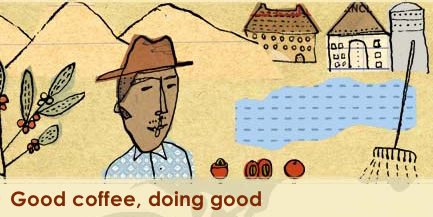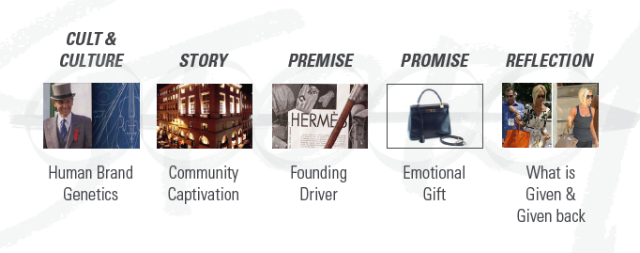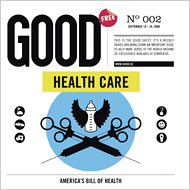What good is my community — and what communion is there, for me?



I was thinking about the idea of goodness — and the notion of human brand — what are we doing that’s good for people?
And in doing our work as strategists, designers, marketers and brand virologists, exploring the context of community, from whatever social network you might be “part” of, what’s the contribution?
There are some, right? Contributions? What are they? You tell me.
Being the “sympath“, I consider this, from leaping into documentation about 500 years ago — relating: c.1530, “to recount, tell,” from L. relatus, referenced — referre (see refer), from re- “back, again” + latus. Meaning “to establish a relation between” is from 1771 — interestingly enough, that its original is tied to building connectivity on the presumption of referencing back, telling stories, and sharing.
During the 1950s, it moved to the concept of being something that you could “relate to” — there was affinity. And I’m surely curious about the concept of story, relationships and “affinity”. So are you, I’m sure. Otherwise you wouldn’t even be reading this!
So Starbucks is exploring the concept of good — being good; and they evince the character of that brand attribute on a variety of levels — they struggle to tell the story in an empowering and honest, though not righteous, way. There is an attempt to be honestly committed — and it honestly (as well) feels like they trying hard. But there’s a challenge — and this is perhaps surmounted in the structuring of nemesis McDonalds: “can you be that big and still be good?” There is a real challenge in truth fullness in mass and scale. And it relates to believability. I’m not sure that McDonald’s is really about trying to “change” their communion in relation to audience — they seem to strike and customize to context and location. It’s a different — but inherently honest — interpretation of audience connectivity.

The facile and obvious alignments sing clearly about communing: that it is community, that it is all about communications. When we are communally connected, we are communicating — and are building community. What communion found? But if you are so big, so massive, can the Starbuckian-siren call be consistently heard — what, for example, of the clarion call of the neighborhood? What, of the return to the relationship that might be espoused in geographic connectedness?
What is the call of place?
Isn’t that something — there’s an alignment! The story is where you are in relation to it. It’s like cult and culture — they’re connected, but we’re not thinking about them in a way that suggests their connection.
Starbucks is clearly exploring, and trying to find, the nature of their community — who’s there, and what’s the relationship? The relation, is about just that: relating.
When I have a relationship with you, I’m sharing that connection, that reflective link back. Working with, for example, Procter & Gamble, I learned how to speak — precisely — to who you are (they are) reaching to. What that means, of course, is the idea that you speak in a language that your colleagues, your friends, can understand. It’s not just the language — it’s how it’s presented.
Design and communicate reflectively, on the assumption that what you are given, is what you are giving back. It’s reflective.
I’ve suggested this here in the “human branding” of Hermès.
You observe the creation of cult, that empowers culture, that leverages story, the emboldens premise, ignites promise, mirrors reflection.

What is given, is given back.
So what I’m really wondering about, in the nature of Starbucks’ Good — is who’s there, who’s connected, who is the community – and how empowered is that connection; what degree of magnetism sparks that alignment? In speaking with others — those of the community, and those that are moving away, and those that were never there — what is the sense of place, a kind of geographically relevant “heart fullness”, that might deepen the truth of the relationship?
What’s your relationship to Starbucks — is it Good?

Who’s responsible, to your thinking?
tsg | nyc
_____________________
Added referential links:
Why does any business fail? Relevance? Matching product alignments to reflection in community? And that is more about the management of legacy and experience than anything else: https://www.girvin.com/blog/carthusia-di-capri-brand-story-legacy-scent/
Blog references:
Girvin, Byers and Responsible Marketing — & Messaging:
http://responsiblemarketing.com/tim-girvin
The concept of responsible marketing (and its etymology):
https://www.girvin.com/blog/the-concept-of-responsible-marketing-its-etymology/
Exploring the brand, the story, the resonance:
http://barrettsbook.wordpress.com/whats-your-story/
Obama and community — the brand emerging:
https://www.girvin.com/blog/exploring-the-brand-obama/